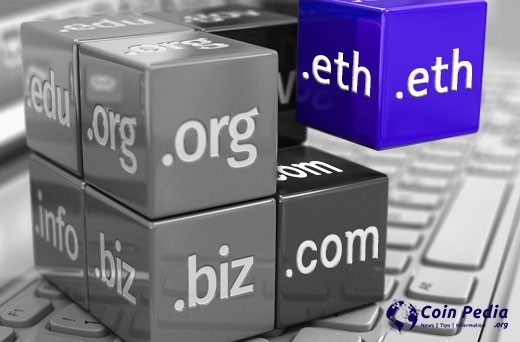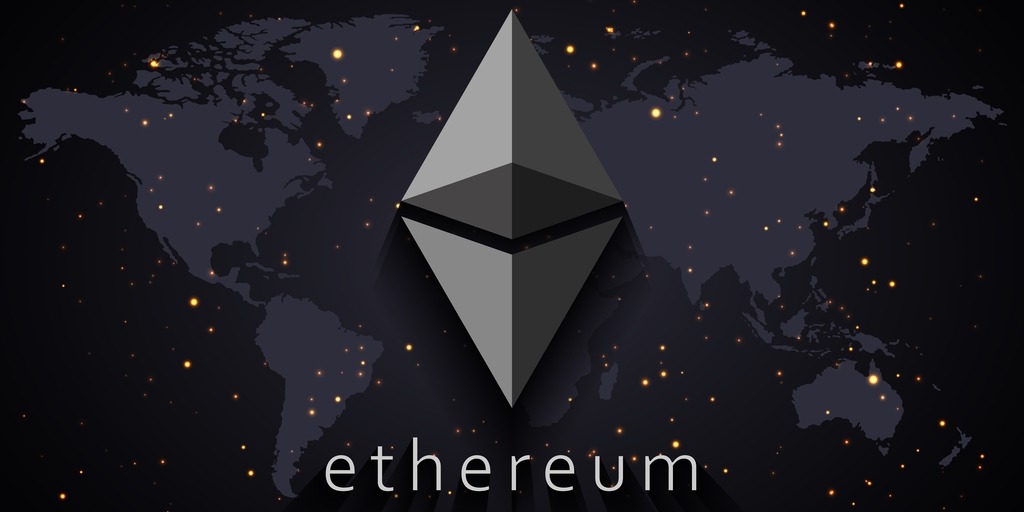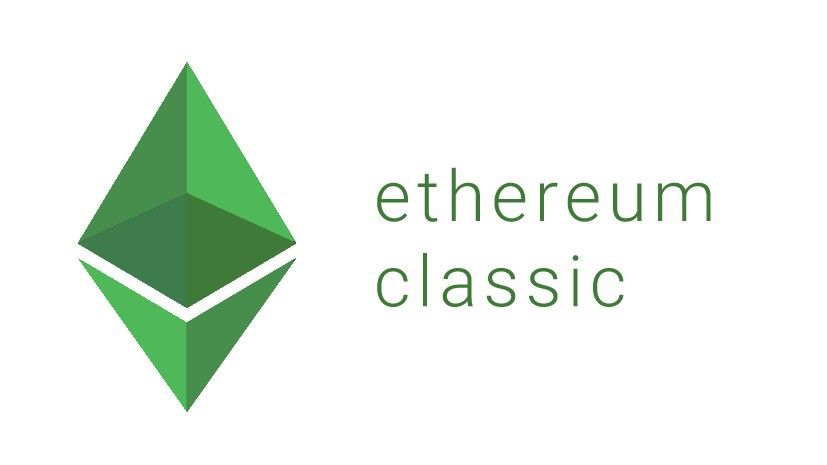Decentralized Applications (dApps) on the Ethereum Blockchain: Top 10 Intriguing Role It Plays
In the world of blockchain technology, Ethereum has emerged as a revolutionary platform that goes beyond the traditional concept of cryptocurrencies. At the heart of Ethereum’s capabilities are Decentralized Applications, or dApps. These applications have the potential to reshape industries, disrupt traditional systems, and empower users in ways previously unimaginable. In this article, we’ll delve into what dApps are and explore their pivotal role in the Ethereum blockchain ecosystem.
What Are Decentralized Applications (dApps)?
Decentralized Applications, commonly known as dApps, are a class of software applications that run on a decentralized network of computers, primarily powered by blockchain technology. Unlike traditional apps, which are hosted on centralized servers controlled by a single entity, dApps operate on a peer-to-peer network of nodes, making them censorship-resistant and tamper-proof.
The Components of a dApp:
A typical dApp consists of four essential components:
- Smart Contracts: These self-executing contracts are at the core of dApps. Smart contracts are written in code and automatically execute predefined actions when specific conditions are met. They ensure transparency and trust in dApp operations.
- Blockchain: dApps run on a blockchain, and Ethereum is one of the most popular choices. The blockchain serves as the decentralized ledger that records all transactions and interactions within the dApp.
- Frontend: This is the user interface through which users interact with the dApp. It can be a web-based interface or a mobile app. The frontend communicates with the blockchain through APIs to retrieve and display data.
- Decentralized Data Storage: Some dApps use decentralized storage solutions like IPFS (InterPlanetary File System) to store data, ensuring data integrity and resilience.
Also, read – Top 5 Uses of dApps In The Web3 Technology
Decentralized Applications (dApps) on the Ethereum Blockchain: An In-Depth Exploration
Decentralized Applications, or dApps, are software applications that run on a decentralized network, as opposed to centralized servers controlled by a single entity. The Ethereum blockchain, launched in 2015, is the most prominent platform for building and deploying dApps. Ethereum’s innovative use of smart contracts—a self-executing code that automatically enforces the terms of an agreement—enables dApps to operate in a trustless, decentralized manner, free from the control of any single party.
The concept of dApps represents a fundamental shift in how applications are built, run, and governed. Instead of relying on traditional servers and databases controlled by a company or organization, dApps leverage blockchain technology to ensure that they are transparent, secure, and resistant to censorship. These characteristics make dApps particularly appealing for a wide range of use cases, from finance and gaming to social networking and supply chain management.
Core Components of dApps
To understand how dApps function on the Ethereum blockchain, it’s essential to break down their core components:
- Smart Contracts:
- Smart contracts are the backbone of dApps. These are pieces of code that automatically execute certain actions when predefined conditions are met. For example, a smart contract could be programmed to transfer a certain amount of cryptocurrency from one user to another once a specific event occurs. Because they are stored on the blockchain, smart contracts are immutable and transparent, meaning that they cannot be altered once deployed and their execution can be verified by anyone.
- Ethereum Virtual Machine (EVM):
- The Ethereum Virtual Machine (EVM) is a crucial element that allows developers to deploy and execute smart contracts. It acts as a runtime environment for Ethereum-based applications and is responsible for processing transactions, ensuring that smart contracts run as intended. The EVM is Turing-complete, meaning it can perform any computation given enough time and resources.
- Tokens:
- Many dApps use tokens to facilitate transactions, reward users, or represent assets. On Ethereum, the most common token standard is ERC-20, which defines a set of rules for creating fungible tokens. Another important standard is ERC-721, which is used for creating non-fungible tokens (NFTs) that represent unique assets. These tokens are crucial for the operation of many dApps, as they enable the transfer of value within the decentralized ecosystem.
- Decentralized Storage:
- While the blockchain is ideal for storing transaction data and smart contracts, it is not suitable for storing large amounts of data due to its limited capacity and high costs. To overcome this, many dApps use decentralized storage solutions like IPFS (InterPlanetary File System) or Arweave. These systems allow data to be stored in a distributed manner across multiple nodes, ensuring that it is accessible and resilient to censorship.
- User Interface (UI):
- The user interface of a dApp interacts with the blockchain through a Web3 provider, such as MetaMask. This UI allows users to interact with the smart contracts and the blockchain without needing to understand the underlying technology. For a dApp to be successful, its UI must be intuitive and easy to use, making blockchain technology accessible to a broader audience.
Key Features of Ethereum Blockchain dApps
Ethereum-based dApps possess several distinctive features that differentiate them from traditional applications:
- Decentralization:
- Unlike traditional applications, which rely on centralized servers, dApps operate on a decentralized network of nodes. This decentralization eliminates the need for intermediaries, reducing the risk of censorship and increasing the application’s resilience to attacks or failures.
- Transparency:
- The code and transactions of dApps are visible on the blockchain, allowing anyone to audit and verify them. This transparency builds trust among users, as they can see exactly how the dApp operates and how their data is being used.
- Censorship Resistance:
- Because dApps run on a decentralized network, no single entity can control or shut them down. This makes them particularly appealing in environments where censorship is a concern, as they can continue to operate even if individual nodes are compromised or removed.
- Security:
- The security of dApps is largely dependent on the security of the underlying blockchain. Ethereum, with its robust proof-of-stake consensus mechanism (after the Ethereum 2.0 upgrade), provides a high level of security against attacks. However, the security of individual dApps also depends on the quality of their smart contracts; poorly written or unaudited code can be vulnerable to exploits.
- Incentive Structures:
- Many dApps incorporate incentive mechanisms to encourage user participation. These incentives can take the form of tokens, rewards, or other benefits that are distributed to users who contribute to the network, provide liquidity, or engage in governance activities.
- Interoperability:
- Ethereum’s wide adoption has led to the development of a large ecosystem of dApps that can interoperate with each other. This interoperability is facilitated by standards like ERC-20 and ERC-721, allowing tokens and data to move seamlessly between different dApps.
Popular Categories of dApps on Ethereum
Ethereum has become the foundation for a diverse array of dApps across various industries. Some of the most popular categories include:
- Decentralized Finance (DeFi):
- DeFi is one of the most significant and rapidly growing sectors in the Ethereum ecosystem. DeFi dApps aim to recreate traditional financial systems—such as lending, borrowing, trading, and insurance—in a decentralized manner. Platforms like Uniswap (a decentralized exchange), Aave (a lending protocol), and MakerDAO (a stablecoin system) are leading examples of how DeFi is transforming finance by removing intermediaries, lowering costs, and providing greater access to financial services.
- Non-Fungible Tokens (NFTs):
- NFTs have gained immense popularity as a way to represent ownership of unique digital and physical assets, such as art, music, and virtual real estate. Ethereum-based marketplaces like OpenSea and Rarible allow users to buy, sell, and trade NFTs, while games like Axie Infinity and Decentraland leverage NFTs to create immersive, player-owned experiences. NFTs have opened new avenues for creators and collectors, enabling them to monetize their work in ways that were not possible before.
- Gaming:
- Blockchain gaming is another rapidly expanding sector, with Ethereum dApps playing a central role. Games like Axie Infinity have popularized the play-to-earn model, where players can earn cryptocurrency by participating in the game. These games often incorporate NFTs to represent in-game assets, allowing players to truly own and trade items they acquire in the game. The integration of blockchain in gaming creates new economic models and opportunities for both developers and players.
- Decentralized Autonomous Organizations (DAOs):
- DAOs are organizations governed by smart contracts and the collective voting power of their members. On Ethereum, DAOs are used to manage everything from investment funds to community-driven projects. DAOs enable decentralized decision-making, where token holders can propose and vote on initiatives, ensuring that the organization operates according to the will of its members rather than a central authority. Examples include The DAO (the first major DAO) and MolochDAO, which funds Ethereum infrastructure projects.
- Supply Chain Management:
- Ethereum dApps are being used to improve transparency and traceability in supply chains. By recording every step of a product’s journey on the blockchain, companies can provide verifiable proof of authenticity and origin to consumers. dApps like Provenance and VeChain offer solutions for tracking goods, ensuring ethical sourcing, and reducing fraud in industries such as food, fashion, and pharmaceuticals.
- Social Networks:
- Decentralized social networks on Ethereum aim to give users control over their data and content. Unlike traditional social media platforms, which monetize user data and impose strict content policies, decentralized social networks like Minds and Peepeth empower users to own their digital identities and interact in a censorship-resistant environment.
- Identity and Privacy:
- Identity management is another area where Ethereum dApps are making an impact. Decentralized identity solutions like uPort and Civic allow users to control their personal information and selectively share it with third parties. These systems help protect privacy and reduce the risk of identity theft by eliminating the need for centralized databases that are vulnerable to breaches.
The Role of dApps on the Ethereum Blockchain:
Now, let’s explore the significant roles that dApps play within the Ethereum ecosystem:
1. Financial Services:
- #DeFi #Finance 💰
Ethereum is often associated with DeFi (Decentralized Finance) applications. DeFi dApps enable users to borrow, lend, trade, and earn interest on cryptocurrencies without the need for traditional banks or financial intermediaries. They provide financial inclusivity to individuals worldwide.
2. Decentralized Exchanges:
- #DEX #CryptoTrading 🔄
DEXs like Uniswap and SushiSwap are dApps that allow users to trade cryptocurrencies directly from their wallets. They provide liquidity and eliminate the need for centralized exchanges, reducing the risk of hacks and enabling non-custodial trading.
3. NFT Marketplaces:
- #NFTs #DigitalArt 🖼️
Ethereum-based dApps have pioneered the NFT (Non-Fungible Token) revolution. NFT marketplaces like OpenSea and Rarible enable artists, creators, and collectors to trade unique digital assets, including digital art, music, and virtual real estate.
4. Decentralized Governance:
- #DAO #Governance 🗳️
Decentralized Autonomous Organizations (DAOs) are dApps that allow communities to make collective decisions and manage funds without centralized authorities. DAOs are used for decentralized governance and decision-making in various projects and organizations.
5. Gaming and Virtual Worlds:
- #Gaming #Metaverse 🎮
Ethereum hosts dApps that power blockchain-based games and virtual worlds like Decentraland and Axie Infinity. These dApps provide users with ownership of in-game assets and facilitate player-driven economies.
6. Supply Chain and Identity Verification:
- #SupplyChain #Identity 🔗
Ethereum dApps are exploring supply chain tracking and identity verification solutions. These dApps enhance transparency and security in supply chains and provide users with control over their digital identities.
7. Decentralized Social Networks:
- #SocialMedia #Privacy 📱
Some dApps aim to create decentralized alternatives to traditional social media platforms, giving users greater control over their data and privacy.
8. Education and Content Sharing:
- #Education #ContentSharing 📚
Ethereum-based dApps can support decentralized education platforms and content sharing networks, enabling creators to monetize their content directly and providing users with censorship-resistant access to information.
9. Environmental Initiatives:
- #Sustainability #Blockchain 🌱
Ethereum dApps are being used to promote sustainability and environmental initiatives by tracking carbon credits and donations transparently on the blockchain.
10. Research and Innovation: – #Research #Innovation 🧪
Ethereum is a hotbed for blockchain research and innovation. Developers continuously create new dApps to explore the boundaries of what’s possible on a decentralized network.
Introduction to Decentralized Applications (DApps) on the Ethereum Blockchain
💡Understanding the DApp Concept
A Decentralized Application, or DApp, is an application built upon a decentralized network, built differently traditional apps that rely on centralized servers.
This…
— Francesco (@FrancescoCiull4) August 28, 2023
Conclusion
Decentralized Applications (dApps) on the Ethereum blockchain represent a transformative force in the world of technology and finance. These applications leverage the power of blockchain technology to create a decentralized, trustless, and transparent ecosystem that challenges traditional systems and empowers individuals.
From the explosive growth of DeFi platforms to the emergence of NFT marketplaces, decentralized governance, and blockchain-based gaming, Ethereum-based dApps have ushered in a new era of innovation and opportunity. They enable financial inclusion, enhance security, and foster a sense of ownership among users.
Moreover, the Ethereum blockchain continues to be a hub for research and development, pushing the boundaries of what is achievable in the realm of decentralized applications. As the technology evolves, dApps are poised to play an even more substantial role in reshaping industries, promoting sustainability, and fostering a user-centric digital landscape.
As we move forward into the era of Web3, it is clear that dApps on the Ethereum blockchain will remain at the forefront of this transformation. They serve as a testament to the power of decentralized systems, where trust is placed in code rather than intermediaries. The potential for dApps to continue disrupting traditional systems and enabling new forms of collaboration and innovation is boundless.
In essence, Ethereum-based dApps are not merely applications; they represent a paradigm shift towards a more equitable, secure, and decentralized digital world. As users and developers embrace this new frontier, the impact of dApps on Ethereum will only become more profound, shaping the future of technology and finance in ways that we are only beginning to comprehend.
Stay informed with daily updates from Blockchain Magazine on Google News. Click here to follow us and mark as favorite: [Blockchain Magazine on Google News].
Get Blockchain Insights In Inbox
Stay ahead of the curve with expert analysis and market updates.
latest from tech
Disclaimer: Any post shared by a third-party agency are sponsored and Blockchain Magazine has no views on any such posts. The views and opinions expressed in this post are those of the clients and do not necessarily reflect the official policy or position of Blockchain Magazine. The information provided in this post is for informational purposes only and should not be considered as financial, investment, or professional advice. Blockchain Magazine does not endorse or promote any specific products, services, or companies mentioned in this posts. Readers are encouraged to conduct their own research and consult with a qualified professional before making any financial decisions. The featured image used is just a creative depiction of the title and it does not intend to hurt sentiments of any person or institution. If it hurts anyone sentiments, please do not hesitate to reach out to Blockchain Magazine.

 Bitcoin
Bitcoin  Ethereum
Ethereum  XRP
XRP  Tether
Tether  Solana
Solana  Dogecoin
Dogecoin  USDC
USDC  Cardano
Cardano  Lido Staked Ether
Lido Staked Ether  TRON
TRON  Chainlink
Chainlink  Avalanche
Avalanche  Wrapped stETH
Wrapped stETH  Wrapped Bitcoin
Wrapped Bitcoin  Stellar
Stellar  Sui
Sui  Hedera
Hedera  Toncoin
Toncoin  Shiba Inu
Shiba Inu  WETH
WETH  Polkadot
Polkadot  LEO Token
LEO Token  Litecoin
Litecoin  Bitget Token
Bitget Token  Bitcoin Cash
Bitcoin Cash  Hyperliquid
Hyperliquid  Uniswap
Uniswap  Official Trump
Official Trump  USDS
USDS  Wrapped eETH
Wrapped eETH  Pepe
Pepe  NEAR Protocol
NEAR Protocol  Ethena USDe
Ethena USDe  Aave
Aave  Aptos
Aptos  Ondo
Ondo  Internet Computer
Internet Computer  Ethereum Classic
Ethereum Classic  Mantle
Mantle  WhiteBIT Coin
WhiteBIT Coin  Monero
Monero  Cronos
Cronos  POL (ex-MATIC)
POL (ex-MATIC)  Jupiter
Jupiter  Render
Render  Dai
Dai  Algorand
Algorand  Layer One X
Layer One X 




